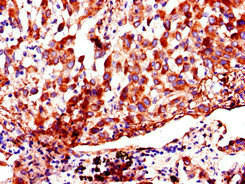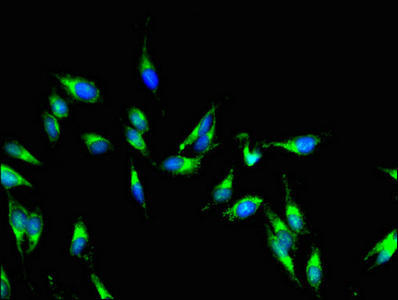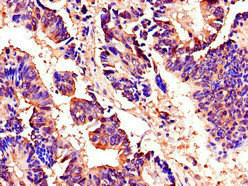| UniProt Protein Function: | AKAP9: Binds to type II regulatory subunits of protein kinase A. Scaffolding protein that assembles several protein kinases and phosphatases on the centrosome and Golgi apparatus. May be required to maintain the integrity of the Golgi apparatus. Isoform 4 is associated with the N-methyl-D-aspartate receptor and is specifically found in the neuromuscular junction (NMJ) as well as in neuronal synapses, suggesting a role in the organization of postsynaptic specializations. Defects in AKAP9 are the cause of long QT syndrome type 11 (LQT11). Long QT syndromes are heart disorders characterized by a prolonged QT interval on the ECG and polymorphic ventricular arrhythmias. They cause syncope and sudden death in response to excercise or emotional stress. They can present with a sentinel event of sudden cardiac death in infancy. 6 isoforms of the human protein are produced by alternative splicing.Protein type: Adaptor/scaffoldChromosomal Location of Human Ortholog: 7q21-q22Cellular Component: Golgi apparatus; centrosome; pericentriolar material; voltage-gated potassium channel complex; cytoskeleton; intracellular membrane-bound organelle; cytosolMolecular Function: protein binding; potassium channel regulator activity; protein complex scaffold; receptor bindingBiological Process: synaptic transmission; transport; organelle organization and biogenesis; spermatogenesis; mitotic cell cycle; signal transduction; G2/M transition of mitotic cell cycle; positive regulation of peptidyl-serine phosphorylation; Sertoli cell developmentDisease: Long Qt Syndrome 11 |
| UniProt Protein Details: | |
| NCBI Summary: | The A-kinase anchor proteins (AKAPs) are a group of structurally diverse proteins which have the common function of binding to the regulatory subunit of protein kinase A (PKA) and confining the holoenzyme to discrete locations within the cell. This gene encodes a member of the AKAP family. Alternate splicing of this gene results in at least two isoforms that localize to the centrosome and the Golgi apparatus, and interact with numerous signaling proteins from multiple signal transduction pathways. These signaling proteins include type II protein kinase A, serine/threonine kinase protein kinase N, protein phosphatase 1, protein phosphatase 2a, protein kinase C-epsilon and phosphodiesterase 4D3. [provided by RefSeq, Aug 2008] |
| UniProt Code: | Q99996 |
| NCBI GenInfo Identifier: | 14194461 |
| NCBI Gene ID: | 10142 |
| NCBI Accession: | Q99996.3 |
| UniProt Secondary Accession: | Q99996,O14869, O43355, O94895, Q75N20, Q9UQH3, Q9UQQ4 Q9Y6B8, Q9Y6Y2, A4D1F0 |
| UniProt Related Accession: | Q99996 |
| Molecular Weight: | 455,423 Da |
| NCBI Full Name: | A-kinase anchor protein 9 |
| NCBI Synonym Full Names: | A kinase (PRKA) anchor protein 9 |
| NCBI Official Symbol: | AKAP9 |
| NCBI Official Synonym Symbols: | LQT11; PRKA9; AKAP-9; CG-NAP; YOTIAO; AKAP350; AKAP450; PPP1R45; HYPERION; MU-RMS-40.16A |
| NCBI Protein Information: | A-kinase anchor protein 9; protein yotiao; protein hyperion; AKAP 120-like protein; AKAP9-BRAF fusion protein; kinase N-associated protein; A-kinase anchor protein 350 kDa; A-kinase anchor protein 450 kDa; protein kinase A anchoring protein 9; A kinase (PRKA) anchor protein (yotiao) 9; protein phosphatase 1, regulatory subunit 45; centrosome- and Golgi-localized PKN-associated protein; centrosome- and golgi-localized protein kinase N-associated protein |
| UniProt Protein Name: | A-kinase anchor protein 9 |
| UniProt Synonym Protein Names: | A-kinase anchor protein 350 kDa; AKAP 350; hgAKAP 350; A-kinase anchor protein 450 kDa; AKAP 450; AKAP 120-like protein; Centrosome- and Golgi-localized PKN-associated protein; CG-NAP; Protein hyperion; Protein kinase A-anchoring protein 9; PRKA9; Protein yotiao |
| Protein Family: | A-kinase anchor protein |
| UniProt Gene Name: | AKAP9 |
| UniProt Entry Name: | AKAP9_HUMAN |









